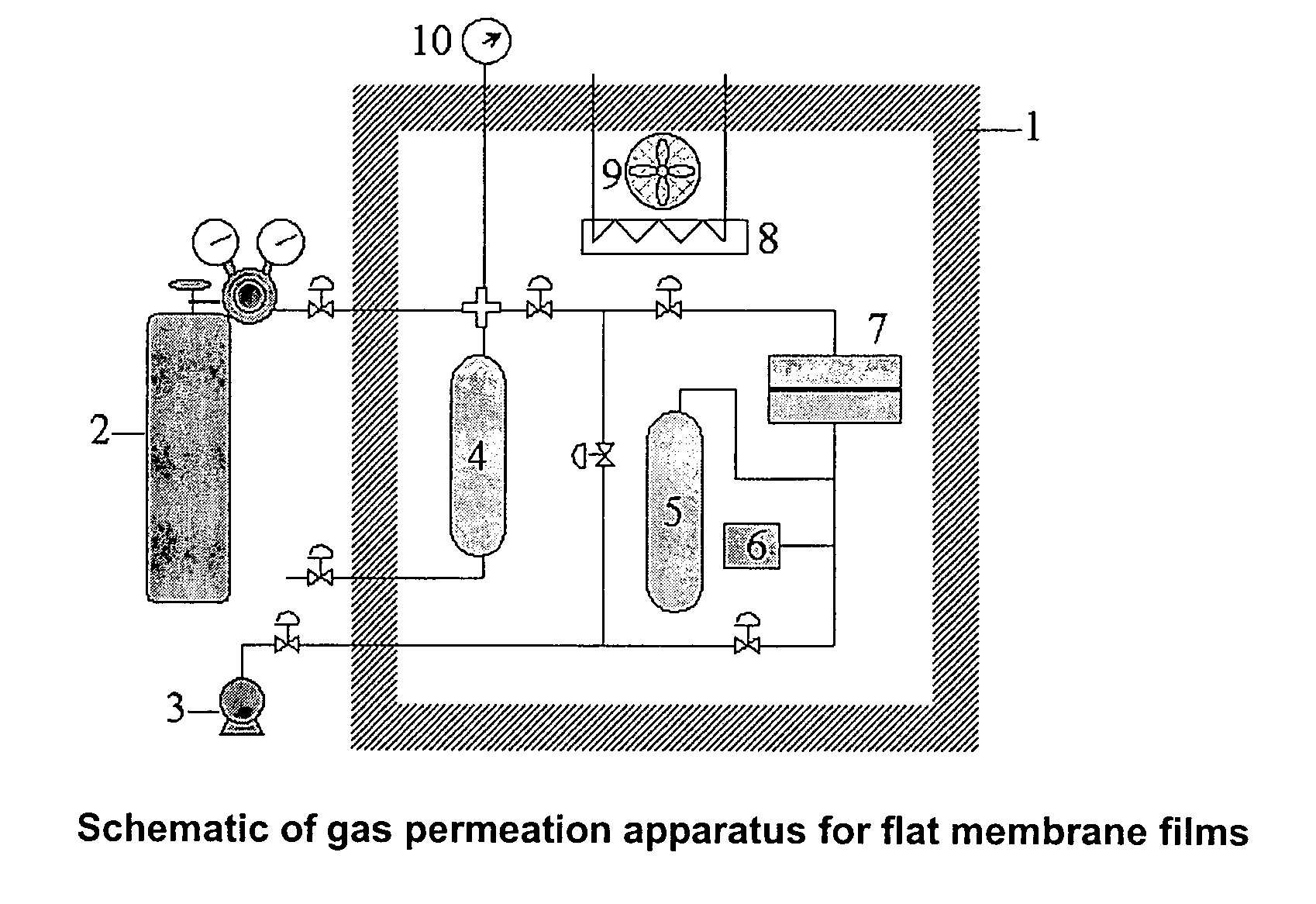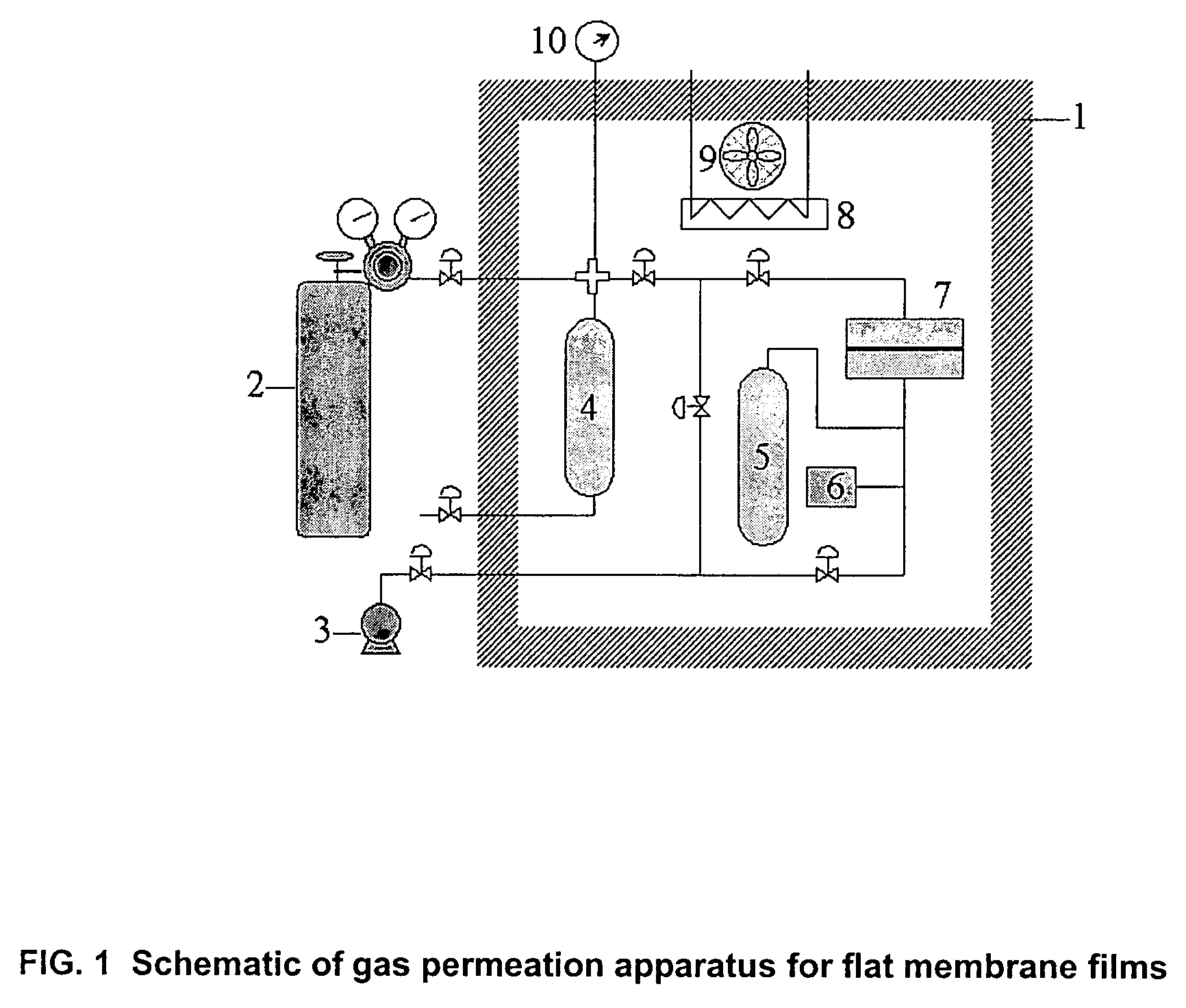Mixed matrix membranes with low silica-to-alumina ratio molecular sieves and methods for making and using the membranes
a technology of high silica-to-alumina ratio and mixed matrix membrane, which is applied in the field of gas separation membranes, can solve the problems of high cost of silanation compounds, inability to achieve mixed matrix effects, and temperature-dependent selectivity of mixed matrix membranes containing high silica-to-alumina molar ratio zeolites,
- Summary
- Abstract
- Description
- Claims
- Application Information
AI Technical Summary
Benefits of technology
Problems solved by technology
Method used
Image
Examples
example 4
Synthesis of CVX-7
[0107]The silicoaluminophosphate molecular sieve, CVX-7, with Erionite framework structure was synthesized according to the following procedure. Initially, 634 grams of aluminum isopropoxide (Chattem Chemical, Inc), ground to 100(US) mesh, were added to 1,600 grams of de-ionized water with vigorous agitation. This mixture was stirred for two hours. Next, 352 grams of Orthophosphoric acid (85 wt. % in water, EMS) were slowly added to the aluminum isopropoxide / water mixture with intense agitation. The resulting mixture was blended vigorously for 30 minutes.
[0108]In the next step, 31.2 grams of Colloidal silica, LUDOX AS-30 (Du Pont), were added to the mixture with agitation followed by 64.8 grams of 48 wt. % Hydrofluoric acid, (Baker). The resulting mixture was stirred for one hour. Finally, 155 grams of cyclohexylamine, (Aldrich) were added to the mixture followed by stirring for 30 minutes. The preparation was seeded with 7 grams of as-made SAPO-17. This material w...
example 5
Mixed Matrix Membrane Containing Non-Silanated CVX-7
[0113]A mixed matrix membrane was prepared using the non-silanated CVX-7 particles, as prepared from Example 4, as the disperse phase. As before, Ultem® 1000, as described in Comparative Example 1, was used as the polymer continuous matrix phase in the mixed matrix membrane. The mixed matrix membrane film containing 18 wt. % non-silanated CVX-7 particles within the Ultem® 1000 matrix was prepared in a similar fashion as described in Comparative Example 3. In other words, the CVX-7 particles were used “as synthesized” and were not further surface-modified with any silane coupling agent (i.e., non-silanated).
[0114]The mixed matrix membrane film was formed in the following steps. Initially, 0.250 grams of the non-silanated CVX-7 particles were added to a 40 mL vial containing about 5 mL of CH2Cl2 solvent to create a slurry. The particles in the slurry were sonicated for about two minutes with a high-intensity ultrasonic horn (VibraCel...
example 6
Preparation and Testing of SAPO-17
[0121]SAPO-17 was prepared as follows. 48.8 grams of aluminum isopropoxide (Aldrich) were added to 64.6 grams of de-ionized water with vigorous mixing. This mixture was then mixed with 17.58 grams of orthophosphoric acid (85 wt. %) using a blender, and blended vigorously for ten minutes. Then, 1.56 grams of colloidal silica (Ludox AS-30, DuPont) were added followed by 3.24 grams of hydrofluoric acid HF (48 wt. %, Aldrich), and the mixture stirred for ten minutes. Next, 7.74 grams of cyclohexylamine (Aldrich) were added and the mixture stirred for five minutes. The mixture was placed in a plastic container and the container into a water bath at 80° C. In order to remove isopropanol, a decomposition product from the isopropoxide. The volume of the mixture was reduced by about 40% as the result of this procedure.
[0122]The mixture was placed into a Teflon lined reactor and heated in the oven at 200° C. for 24 hours without agitation. The product was sep...
PUM
| Property | Measurement | Unit |
|---|---|---|
| molar ratio | aaaaa | aaaaa |
| number average particle size | aaaaa | aaaaa |
| number average particle size | aaaaa | aaaaa |
Abstract
Description
Claims
Application Information
 Login to View More
Login to View More - R&D
- Intellectual Property
- Life Sciences
- Materials
- Tech Scout
- Unparalleled Data Quality
- Higher Quality Content
- 60% Fewer Hallucinations
Browse by: Latest US Patents, China's latest patents, Technical Efficacy Thesaurus, Application Domain, Technology Topic, Popular Technical Reports.
© 2025 PatSnap. All rights reserved.Legal|Privacy policy|Modern Slavery Act Transparency Statement|Sitemap|About US| Contact US: help@patsnap.com



